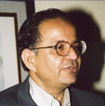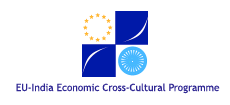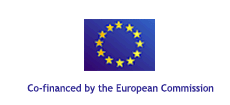
The three-year project "Europe and India: Past, Present and Future" under the "EU-India Economic Cross-Cultural Programme" was by all accounts a great success. Activities started in March 1999 with a course at the B.M. Birla Science Centre in Hyderabad, given by Giampiero Mastinu and Massimiliano Gobbi of the Technical University of Milan, and ended in October 2001 with a course at the International Centre for Mechanical Sciences in Udine, conducted by myself and Paolo Serafini of the University of Udine. All the courses were attended by specialist engineers and research workers, as well as a few advanced students. Participants in the joint research on hydrology were relevant professionals from some of the most prestigious organisations in India, like the National Geophysical Research Institute, the Geological Survey of India, the Environment Pollution Training Research Institute and other private organisations.
These events over a three-year period provided the perfect platform for experts, professionals, research workers and students from the European and Indian institutions to meet, interact and develop a bridge of understanding. Most significantly, the areas covered were of utmost relevance and importance to both India and Europe, in particular the fields of information technology, mechanical sciences and the environment. What was particularly heartening is that the interaction went beyond the project itself and led to visits and exchanges involving various institutions. An example of this was the return visit of Nicolò Bachschmid from the Technical University of Milan to Bharat Heavy Electrical Limited in Hyderabad in the year 2000.
The hydrology project, conducted by Peter Hacker and Robert Spendlingwimmer of the ÖFPZ Arsenal, culminated in a report that detailed the problems of groundwater pollution by industrial effluents in the Patancheru area to the authorities of Hyderabad. The conflict involving the three vested interest groups there representing agriculture, industry and residents was brought out clearly and remedial measures suggested. The report was handed over in person to the Municipal Commissioner of Hyderabad, who attended the final course and round table.
It is important to draw attention to the fact that the three-year project has had a great impact. Symbolically, this impact is manifest in the fact that the Società Indologica "Luigi Pio Tessitori", the B.M. Birla Science Centre, the International Centre for Mechanical Sciences, the University of Udine and the University of Padua have signed various memoranda of understanding for future exchanges of experts, as well as joint courses and PhD programmes. All this has been particularly appreciated by both the Indian Embassy in Italy and the Italian Embassy in India. Both the experts and participants, from India and abroad, have found this to be a most enriching and rewarding experience.
I would like to end on a personal note. The project has given me the opportunity to meet some of the nicest people from European Academia, for which I am very thankful.

